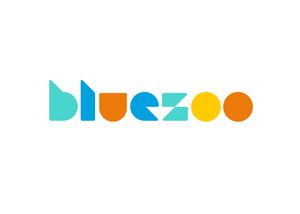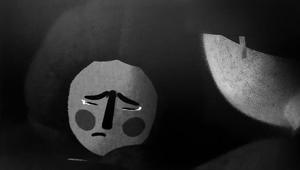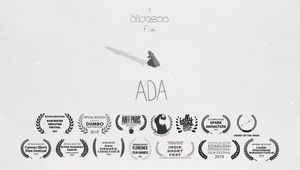
A Real-Time Revolution in Animation

There’s a big problem brewing with animation. As beautiful and creative as the medium is, it can take a painfully long time to create. This is a big issue when the booked media time is just a few weeks away. So agencies can easily shy away from the medium.
Why does it take time? Pre-production aside, there’s a huge amount to do, all in different stages. Building detailed digital characters and virtual environments, then animating at a few seconds a day.
The next stages are when it starts to get really slow - lighting, rendering and compositing. In CG animation, this is just pure number crunching, where the computer is calculating billions of light values to replicate the beauty of reality. This means progress can be slow, new versions take days to see, and a huge amount of time is wasted watching glacial-paced progress bars on computer screens as shots render.
Studios have tried to minimise this as much as possible, by investing in big render farms to render shots in huge parallel scale. This brought render time from days to hours. Then using new technologies such as GPU rendering sped this up again, having thousands of processors on a chip instead of just one. This brought render time from hours to minutes per frame. But this could still mean an overnight render of hundreds of frames for a 30-second advert.
The problem with this is not just taking the time to render the final animation. This speed causes issues from the start. The visual quality of animations are only as good as how fast you can iterate. CG animation these days looks a lot higher quality because artists can work faster and experiment more to reach the image the artist has in their mind, or even surpass it.
In any case, it just about works in the time available (usually putting in some intense hours towards the deadline) and agencies routinely have incredible success with CG animated projects.
So what big problem is brewing? Well, times are changing, the world is getting faster, and audiences are more hungry for conversation.
As viewers have more choice and more platforms, brands need to push out more content to feed demand and keep engagement up. Audiences want to see fresh, responsive content which is relevant to how the world is changed, not in weeks or days, but in the last few hours.
Creators on YouTube have responded to this by churning out some eye-waveringly awful animations (which anyone who has young kids can relate to), and others played with stop-gap solutions such as creating pre-made animations that can be stitched together to mimic real-time content.
But does it need to be this way? If we look to gaming, modern computer games look breathtakingly stunning, often looking like cinematic Hollywood films, all rendered in the game engine in real-time. So by utilising the technologies they use, can this help animators out? Well yes, it can!
In the last few years, the hardware has progressed leaps and bounds, and the game engines like Unreal Engine and Unity are in an arms race to produce better and better visuals. This means we're now in a place to embrace the technology to create animated content that matches the quality we demand.
So you've switched to a real-time rendering system. Now you get a faster final render. Great! But the real benefit is from the workflow. It means improved communication. Any project is only as good as how well the team communicate. In a non-real-time pipeline, all the artists are working in blinkered silos. The animator can't see what the final lighting looks like, the lighting artist doesn't know how the compositor will polish the shot or what effects will be added on. That leads to unexpected issues at the end, where there are different expectations and assumptions. And too my assumptions makes risky business.
The ethos of a real-time pipeline is that you aim to work with the final-look picture, as early as possible. This makes it more like a live-action film set, where the animator can easily see how the lighting looks, and the asset and texture artists can see how their models look in the final lighting and adjust if necessary. And all of this can happen at the same time, with zero ambiguity. This means problems are flagged up instantly, so time can be spent on making the animation look great, not fire-fighting issues.
This also means experimentation becomes quicker. It's not always evident if a storyboard will work once animated, and adjusting camera angles once a shot has been rendered is expensive and time-consuming. In real-time this can happen instantly, so from a creative perspective, storytelling can rule supreme, without being a slave to render times.
Fortunately, this also opens up the possibilities of working with modern streaming platforms. Animations can be digitally puppeteered and stream to YouTube or Facebook, allowing brand mascots to truly interact with audiences in ways which have never been possible before. Mixing procedural animation from game-engines into this means even higher real-time fidelity. Imagine a fishbowl head character puppeteered in real-time, where the water swashes around naturally with gorgeous light caustics and refractions, while the goldfish is puppeteered by a second performer. The opportunities are truly infinite.
The benefits aren't just limited to production. Other departments such as marketing can utilise this workflow - want to experiment with alternative colours for an animated brand mascot? There's very little overhead to rendering out two versions of the commercial for A/B testing.
In 2019 a further revolution will take place, which is the introduction of technology which allows real-time raytracing. This simulates light accurately, giving high-quality reflections, refractions and beautiful soft shadows. Everything that makes a computer game look computer-gamey will be gone. This has been the holy grail of CG rendering since it was invented in the '70s, and it’s a few months away.
Ultimately, animation studios can achieve their creative ambitions by iterating faster, so it’s less stressful to achieve the quality they strive for, and clients can see the final look sooner, which allows more experimentation to produce even better and more engaging creative content. It’s a win-win for everyone.
Tom Box is co-founder of Blue Zoo Animation Studio













